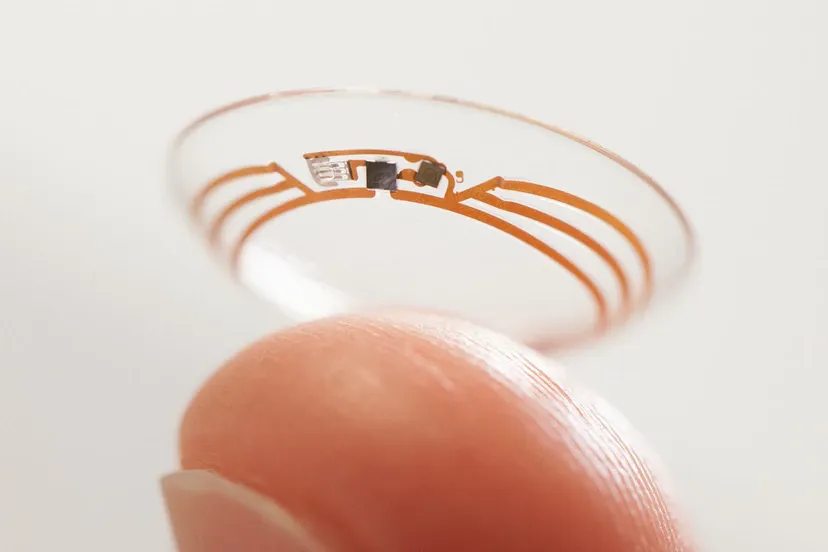
As well as adjusting sight, specialists are chipping away at elements, for example, expanded reality, night vision and the capacity to zoom in and out, as well as the conclusion and treatment of pathologies.
An ever increasing number of companies and researchers are attempting to outfit contact lenses with applications that quite recently still seemed like sci-fi, for example, the capacity to record recordings or analyze and try and treat infections. Mojo Vision, an American startup, is one company that has been working on its models beginning around 2015. It is at present fostering an aggressive venture including expanded reality focal points that, as well as remedying your vision, will allow you to counsel a wide range of data, from the paths on a ski slant to your speed when you run, all through microLED shows the size of a grain of sand.
"In the short term, it sounds like a futuristic idea, but 20 years ago we couldn’t even imagine many of the technological advances that we have today,” says Ana Belén Cisneros del Río, deputy dean of the College of Opticians-Optometrists in the Spanish region of Castilla y León, of the Mojo Vision project. However, Daniel Elies, a specialist in cornea, cataract and refractive surgery and medical director of the Institute of Ocular Microsurgery (IMO) Miranza Group in Madrid, does not believe that this type of contact lens will become part of everyday life anytime soon, “especially due to cost issues.”
One of the companies keen on assembling increased reality contacts is Magic Jump. Sony, for its part, applied a couple of years prior for a patent for lenses that can record videos, and Samsung did likewise for focal points furnished with a camera and a showcase that ventures pictures straightforwardly into the client's eye. A few specialists are attempting to make mechanical lenses that can zoom in and out with the blink of an eye. But others are dealing with night vision contact lenses, which could be valuable in military applications.
As per research distributed in the journal Science Advances. A few producers utilize obscure and weak parts in the savvy contact lenses. The creators bring up, could hinder the client's vision and harm the eye. For this kind of contact lens to go onto the market, as well as conquering various specialized difficulties. It is fundamental that they represent no gamble to eye wellbeing. “It is still a foreign body that we put into the eye,” says Cisneros, who insists the significance of investigating the advancement of materials that are biocompatible with the outer layer of the cornea.
On the off chance that there is one field where the two researchers and tech goliaths are attempting to harness the capability of contact lenses, it is wellbeing. A review distributed in the journal of Advanced Materials Technologies makes sense of that contact lenses sensors can be utilized to screen numerous illnesses and conditions: “The presence of biomarkers in the tear fluid will lead to diagnostic contact lenses that will help detect and treat systemic and ocular diseases, such as diabetes, cancer and dry eye syndrome,” says Cisneros.
The expert predicts that future lenses will actually be able to screen eye pressure, search for glaucoma (a sickness that harms the optic nerve) and even produce pictures of the retinal vasculature for the early identification of hypertension, stroke and diabetes. For patients with the last option, lenses equipped for estimating blood glucose levels would be useful; something that companies like Google and Microsoft have been working on for quite a long time. Different researchers have attempted to go further and make a variant that changes tone to caution about changes in the glucose levels.
One constraint of these lenses is that they can commonly just distinguish a solitary biomarker in the eye, like glucose or lactic corrosion, as per the review distributed in the journal of Advanced Intelligent Systems. The creators accept that creating lenses fit for recognizing various substance parts continuously "will make contact lenses all the more remarkable as biomedical instruments."
These lenses could likewise be helpful for the treatment of some eye pathologies. As a matter of fact, a few examinations feature their true capacity as convenient clinical gadgets to break down the eye's reaction to certain medications and assess surgeries. “Drug-delivering contact lenses could offer more precise dosage than traditional eye drops, increasing the time that a drug remains on the ocular surface and reducing side effects,” adds Cisneros.
It's still too soon to understand what advancements will be integrated into contact lenses in the next few decades, however the potential outcomes are huge. Elies doesn't preclude a far off future where they are outfitted with sensors or a camera equipped for recording the eye's internal information and can make analyze or send admonitions.